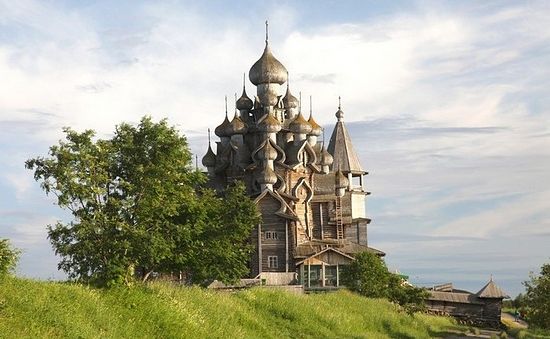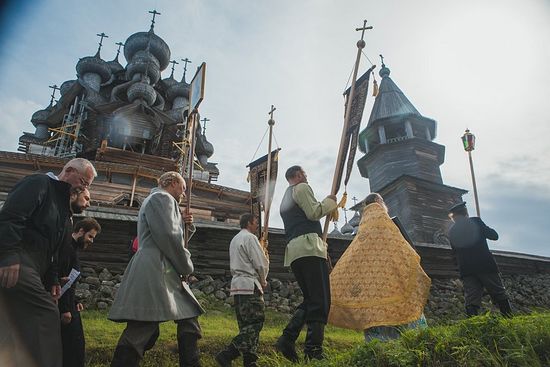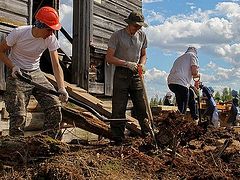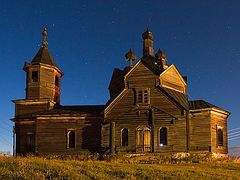Kizhi Island, Moscow, August 3, 2017
The restoration of the Church of the Transfiguration of the Kizhi Pogost (church courtyard), which is part of the Kizhi Park museum-reserve ensemble on Lake Onega in Russia’s Republic of Karelia, is set for completion by 2020, according to museum director Elena Bogdanova. The first service is planned for August 19, the feast of the Transfiguration of the Lord, the church’s patronal feast day, reports the Russian Ministry of Culture.
“We will complete the restoration of the church in 2019, and the interior decoration in 2020. The church will be active, there will be services there. We are preparing for the first service to take place in the Church of the Transfiguration on August 19, 2020, after a long break,” said Bogdanova. The church is currently at 60% readiness.
In particular, work is underway on the restoration and renovation of 105 icons, and more than 260 structural elements (panels, canopies, columns, column caps). It is also planned to produce 16 new icons for the church’s celling, which is painted like the sky, with Christ in the middle.
Work on the church is extremely complex– it is being lifted by a special construction device and is literally hanging in the air. During the renovations people have started calling it “the flying church.”
Kizhi is one of Russia’s largest open-air museums, featuring ancient wooden Russian buildings collected from throughout the Russian north in Soviet times. The wooden architecture in the churches on Kizhi Island is rated to be the world's eighth wonder and is included on the UNESCO World Heritage List.
Legend has it that the architectural ensemble on Kizhi Island (in Lake Onega, 764 kilometres north of Moscow) comprising two churches and a bell-tower built in the 18th and 19th centuries, was sculpted by a carpenter named Nestor. According to legend, the only tool Nestor used was his axe. He apparently did not use even a single nail. When the building was completed in 1714 Nestor threw his axe in the lake so that nobody could replicate his masterpiece. However, it must be pointed out that, contrary to legend, there are nails in these wooden buildings, but they were used only to fix the decorative wooden panels to sloping walls and not in the original construction.
The church celebrated its 300th anniversary in 2014, and the museum's mission, according to the director, is extending its life by as much. “UNESCO experts have always noted the very high quality of the restoration of the Transfiguration Church,” Bogdanova added.






